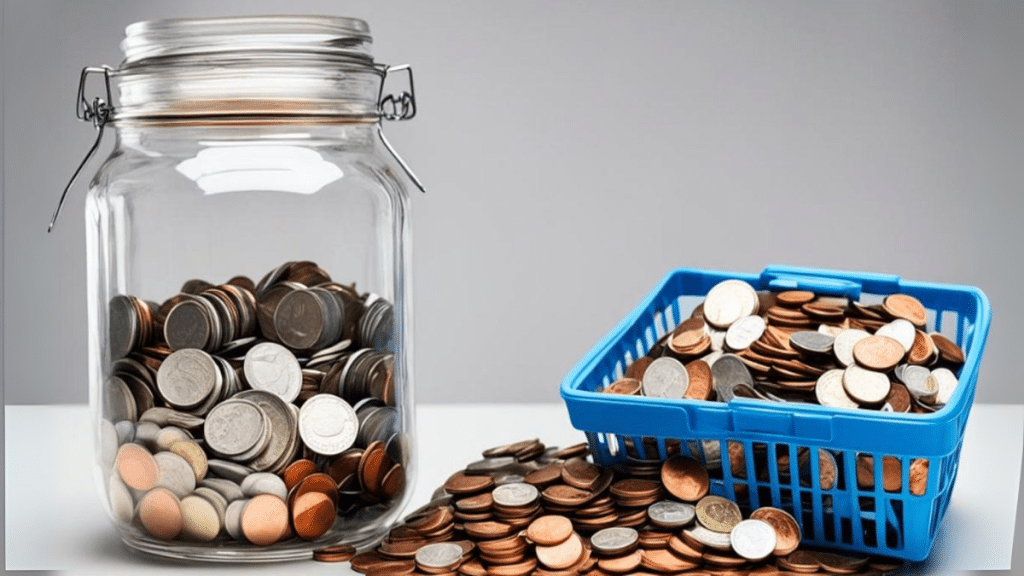In today’s economy, where prices continue to rise and financial stability feels uncertain, many individuals and families are looking for intelligent ways to stretch their dollars. Frugal living is not just about cutting back—it’s about being intentional with your resources, making smart choices, and focusing on value over cost. Contrary to the misconception that frugality means deprivation, the truth is that with the right strategies, you can live well on less.
In this guide, we’ll walk you through smart frugal living strategies that are both effective and practical. Whether you’re trying to pay off debt, build savings, or simply spend more wisely, these tips will help you take control of your finances—without sacrificing the lifestyle you love.
What Is Frugal Living?
Frugal living is a lifestyle choice that emphasizes thoughtful spending, conscious saving, and resourcefulness. It involves making deliberate decisions about how and where to spend your money to align with your values and long-term goals.
Unlike extreme budgeting or penny-pinching, frugal living encourages balancing enjoyment with smart financial habits, ensuring you get the most out of every dollar you earn.
Why Frugal Living Matters More Than Ever
With inflation impacting everything from groceries to gas, and many people facing stagnating wages, frugal living has become a necessity rather than a trend. By embracing a frugal lifestyle, you can:
- Avoid unnecessary debt
- Save for emergencies or retirement
- Reduce financial stress
- Increase freedom and flexibility in life choices
To help you get started, we’ve gathered some of the best smart frugal living strategies from trusted resources like KindaFrugal.com, a go-to hub for simple and effective money-saving advice.
1. Budget Like a Pro
Frugal living starts with a clear and realistic budget. Without understanding where your money is going, it’s impossible to know where to cut back or improve.
Tips to Create a Frugal Budget:
- Track your expenses using free apps like Mint or YNAB.
- Identify non-essential categories (subscriptions, dining out, impulse buys).
- Set monthly spending limits and stick to them.
- Use the 50/30/20 rule: 50% needs, 30% wants, 20% savings/debt payments.
By being aware of your spending habits, you can begin to redirect money toward meaningful goals.
2. Embrace the “Needs vs. Wants” Mentality
One of the most powerful tools in the frugal toolbox is the ability to distinguish between needs and wants. Before every purchase, ask yourself:
- Do I truly need this?
- Can I live without it?
- Is there a cheaper or free alternative?
Train your mind to delay gratification and focus on value. Over time, these small mental shifts can save you hundreds—if not thousands—of dollars each year.

3. Discover Practical Ways to Save Money Daily
You don’t need to make huge sacrifices to start saving. Everyday decisions offer opportunities to cut costs while maintaining comfort and convenience.
Here are some practical ways to save money from Kinda Frugal:
Food & Grocery:
- Meal plan weekly to avoid impulse purchases.
- Buy in bulk for staples like rice, oats, and pasta.
- Switch to store brands—they’re often just as good.
- Shop late evenings for marked-down items.
Utilities & Bills:
- Unplug electronics when not in use.
- Use energy-efficient LED bulbs.
- Lower your water heater temperature slightly.
- Bundle internet and mobile services to get discounts.
Transportation:
- Use public transportation or carpool.
- Plan errands in one trip to save gas.
- Keep your tires inflated for better fuel economy.
These everyday actions add up and help cut waste without cutting enjoyment.
4. Make Frugality Fun with DIY
DIY is the frugal person’s secret weapon. From cleaning products to gifts, doing things yourself can be incredibly rewarding—and money-saving.
Easy DIY Projects That Save Money:
- Make homemade cleaners with vinegar and baking soda.
- Repurpose old furniture instead of buying new.
- Create handmade gifts for birthdays and holidays.
- Start a small herb or vegetable garden.
Not only do these DIY projects help your budget, but they also promote sustainability and creativity.
5. Avoid Lifestyle Inflation
As income increases, so does the temptation to spend more. This is known as lifestyle inflation—a major obstacle to long-term wealth.
Instead of upgrading everything when you get a raise or bonus:
- Increase your emergency fund contributions.
- Pay extra toward student loans or credit card debt.
- Invest in low-cost index funds or retirement accounts.
Living below your means, even when you earn more, is a hallmark of smart frugal living.
6. Buy Secondhand and Save Big
One of the easiest ways to save money and reduce environmental impact is to shop secondhand. Today, you can find quality used items in excellent condition for a fraction of the original price.
What to Buy Used:
- Clothes and shoes
- Furniture and decor
- Electronics (with warranty)
- Books, games, toys
Use platforms like Facebook Marketplace, Craigslist, and thrift stores for great deals. Being frugal doesn’t mean being cheap—it means being resourceful and smart.
7. Plan for the Unexpected
Unexpected expenses are one of the fastest ways to derail financial progress. That’s why having a rainy day or emergency fund is essential.
Frugal Tips to Build an Emergency Fund:
- Automate a small monthly transfer to savings.
- Save tax refunds and bonuses instead of spending them.
- Use cashback apps like Rakuten or Ibotta and save the rewards.
Having this safety net will keep you from falling into debt when surprises hit.
8. Learn the Power of “No-Spend” Challenges
If you want to kickstart your frugal journey, try a no-spend challenge—a designated period (a week or a month) where you avoid all non-essential purchases.
Benefits include:
- Reigniting gratitude for what you already have.
- Breaking bad spending habits.
- Saving a significant amount in a short time.
Set a specific goal and reward yourself at the end to make it more enjoyable.
9. Optimize Your Home for Efficiency
Your home can either help or hurt your financial goals. With a few changes, you can make your living space more energy-efficient and budget-friendly.
Smart Frugal Home Tips:
- Use weather stripping to seal windows and doors.
- Install a programmable thermostat.
- Wash clothes in cold water and air dry when possible.
- Cook in bulk and freeze meals.
These small habits save time, money, and energy—all core goals of frugal living.
10. Tap Into Frugal Living Communities
You’re not alone on your frugal journey. Online communities like KindaFrugal.com offer a wealth of knowledge, encouragement, and proven strategies for those seeking a simpler and smarter lifestyle.
Whether you’re looking for budgeting tools, success stories, or meal planning hacks, joining a community can help keep you motivated and on track.
Final Thoughts: Frugal Living Is a Smart Lifestyle, Not a Sacrifice
Living frugally doesn’t mean living poorly. It means living with intention, purpose, and freedom. When you choose to be frugal, you’re choosing financial security, less stress, and more control over your future.
By incorporating these smart frugal living strategies and taking advantage of trusted resources like KindaFrugal.com, you’ll begin to see how easy and empowering it is to save money without giving up the things you value most.
So start today—because being frugal is the smartest investment you can make in your life.
